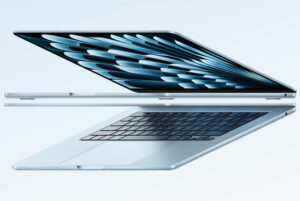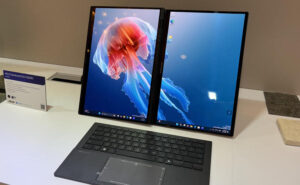MacBook Air M1 (2020) Review: A Time-Tested Powerhouse That Still Impresses

Apple’s MacBook Air M1 (2020) continues to demonstrate its enduring value in 2025, balancing performance with affordability. Despite newer models in the market, this laptop stands out for its M1 chip capabilities, exceptional battery life, and refined build quality. While it faces competition from recent releases, its combination of features and performance at its price point makes it a compelling choice for users seeking a reliable, powerful laptop for everyday computing needs.
Design and Build Quality
The 1.29kg aluminum chassis exudes premium quality, rivaling high-end competitors like the Dell XPS 13. Available in Gold, Silver, and Space Grey, it maintains a sleek profile with precise craftsmanship. The fanless design ensures silent operation, although some might find the display bezels dated compared to newer alternatives.
Display
The 13.3-inch LED-backlit IPS display offers 2560 x 1600 pixels resolution at 227 ppi, with 400 nits of brightness. While lacking touch capabilities found in competitors like the HP Spectre x360, it compensates with P3 wide color gamut support and True Tone technology, delivering accurate colors for creative work.
Software
Running the latest macOS Sequoia 15.3, it offers seamless integration within the Apple ecosystem. The native M1 optimization ensures smooth performance across apps, including iOS applications, setting it apart from Windows alternatives.
Performance
The M1 chip, featuring an 8-core CPU and up to 8-core GPU, delivers impressive performance that often surpasses similarly priced Windows laptops with Intel Core i5 or AMD Ryzen 5 processors. The unified memory architecture enhances efficiency, allowing smooth multitasking even with intensive applications. Benchmark tests show 3.5x faster CPU performance and up to 6x faster GPU performance compared to previous generations. While the base 8GB RAM might concern power users, the efficient memory management and swap technology ensure responsive performance. The laptop handles everyday tasks, content creation, and light gaming efficiently, although some competing Windows laptops with dedicated GPUs might perform better in graphics-intensive tasks.
Battery Life
The 49.9Wh battery provides exceptional longevity, offering 8-10 hours of real-world use, with some users reporting up to 18-19 hours. This surpasses many Windows competitors in its price range.
Keyboard and Trackpad
The backlit Magic Keyboard offers comfortable typing with good key travel. The Force Touch trackpad remains industry-leading, offering precise control and pressure-sensing capabilities.
Ports and Connectivity
Two Thunderbolt/USB 4 ports support various protocols including DisplayPort and charging. While Wi-Fi 6 and Bluetooth 5.0 provide solid wireless connectivity, the limited ports might necessitate dongles.
Audio and Webcam
The stereo speakers deliver decent audio quality for their size. However, the 720p webcam falls short compared to competitors offering 1080p cameras.
Thermal Performance
The fanless design ensures silent operation but can lead to throttling under sustained heavy loads, unlike some fan-equipped competitors.
Pros and Cons
Pros
- Outstanding M1 chip performance
- Excellent battery longevity
- Premium build quality
- Silent operation
- Responsive keyboard and trackpad
Cons
- Thermal throttling under heavy loads
- Basic webcam quality
- Limited port selection
Market Buzz
User reviews consistently praise its durability, performance, and integration within the Apple ecosystem. The fanless design and long battery life receive particular appreciation from mobile professionals.
Pricing
- 8GB RAM + 256GB SSD: ₹67,990
- 8GB RAM + 512GB SSD: ₹86,990
Value for Money
The MacBook Air M1 offers exceptional value, delivering premium performance and build quality at a competitive price point in the Indian market.
Final Verdict
The MacBook Air M1 (2020) remains a solid choice in 2025, particularly for users prioritizing battery life and performance. While newer models exist, its price-to-performance ratio and refined user experience make it a worthwhile investment.

